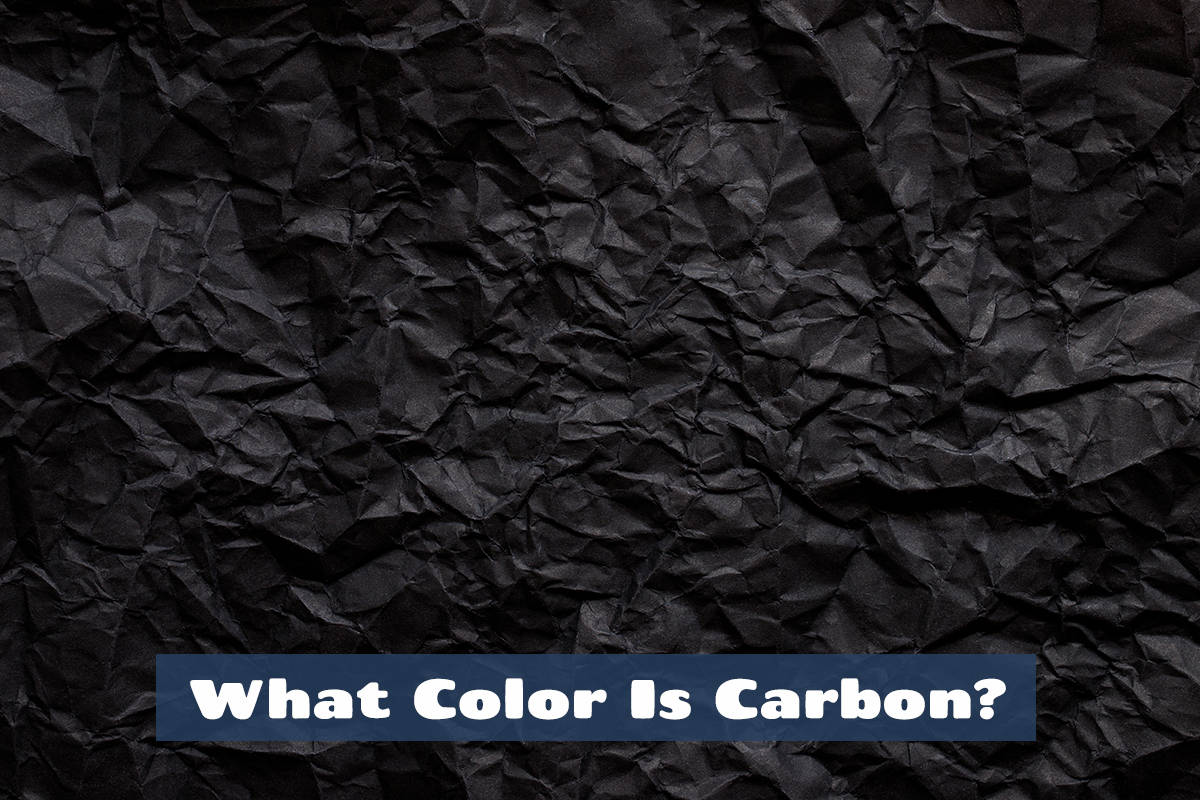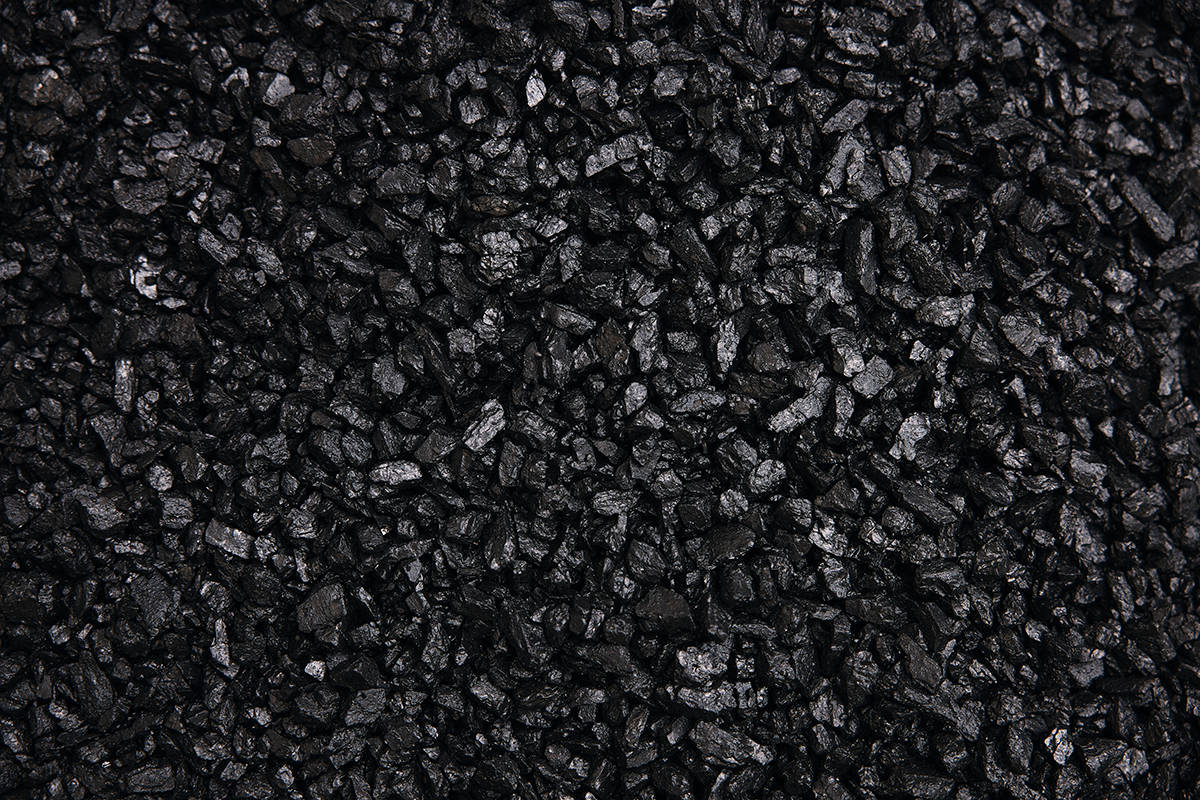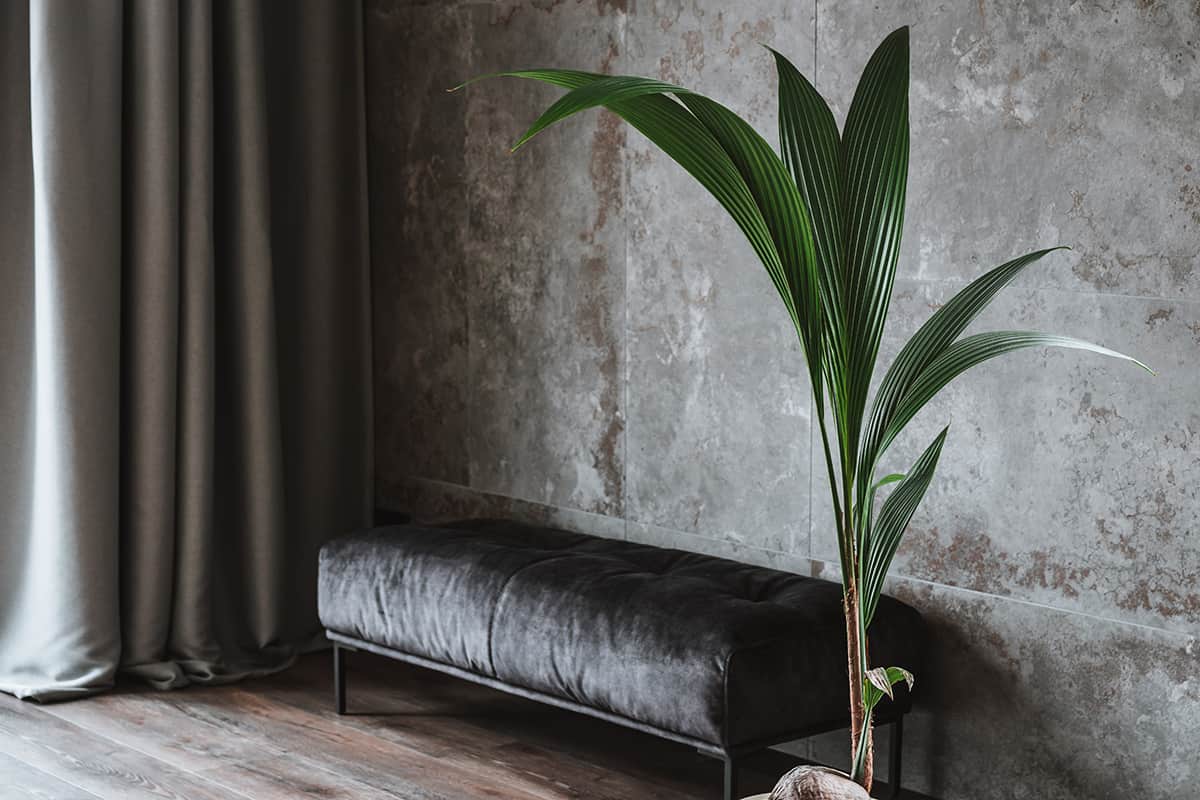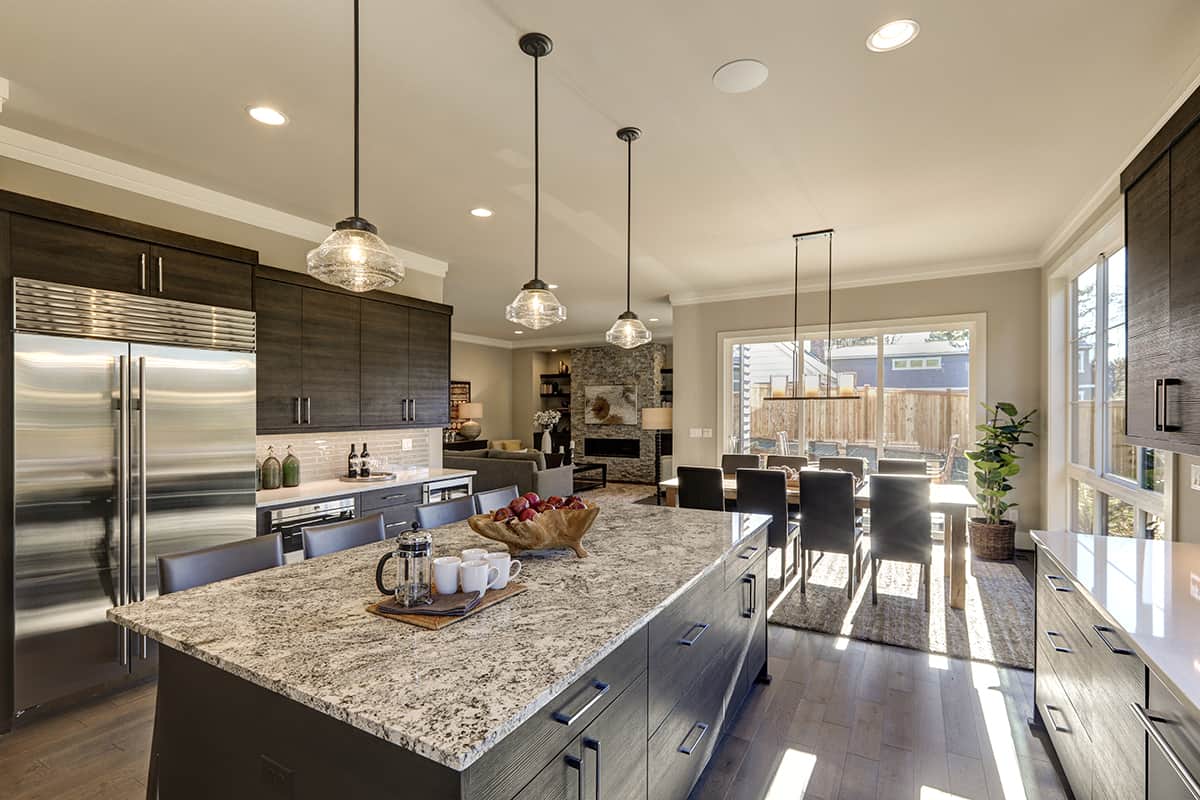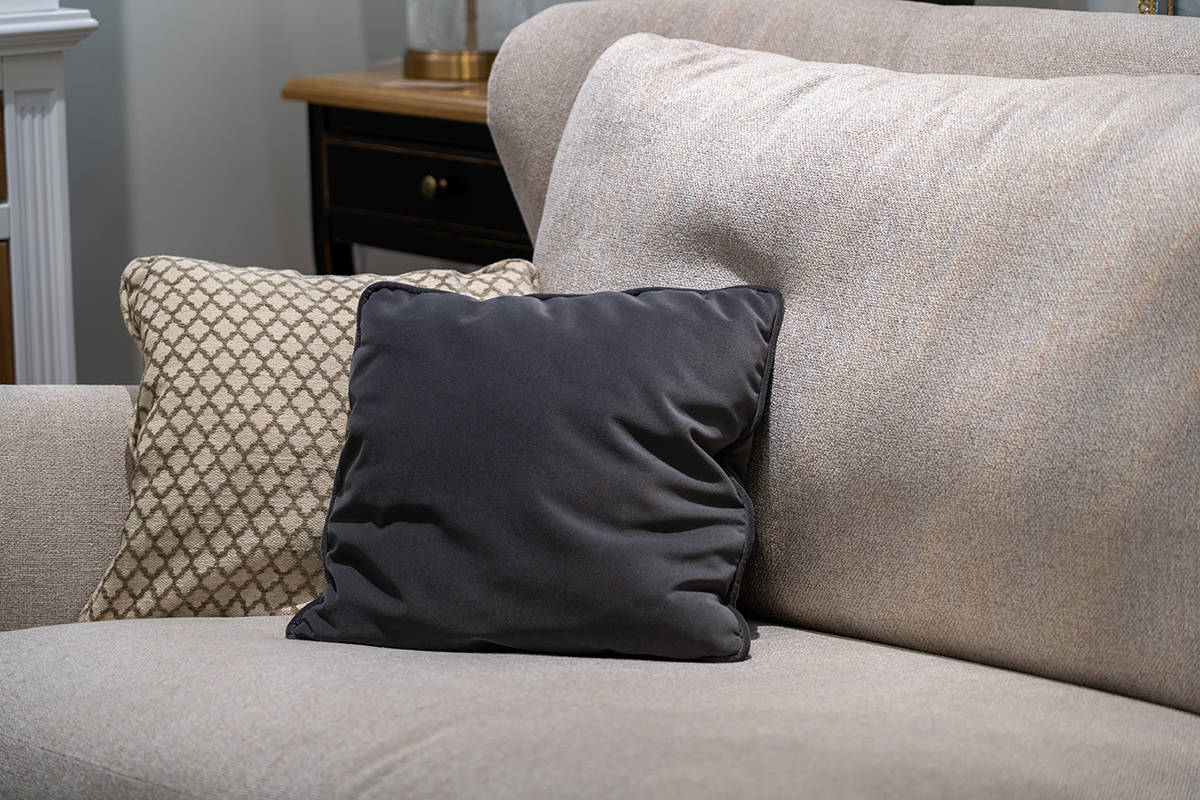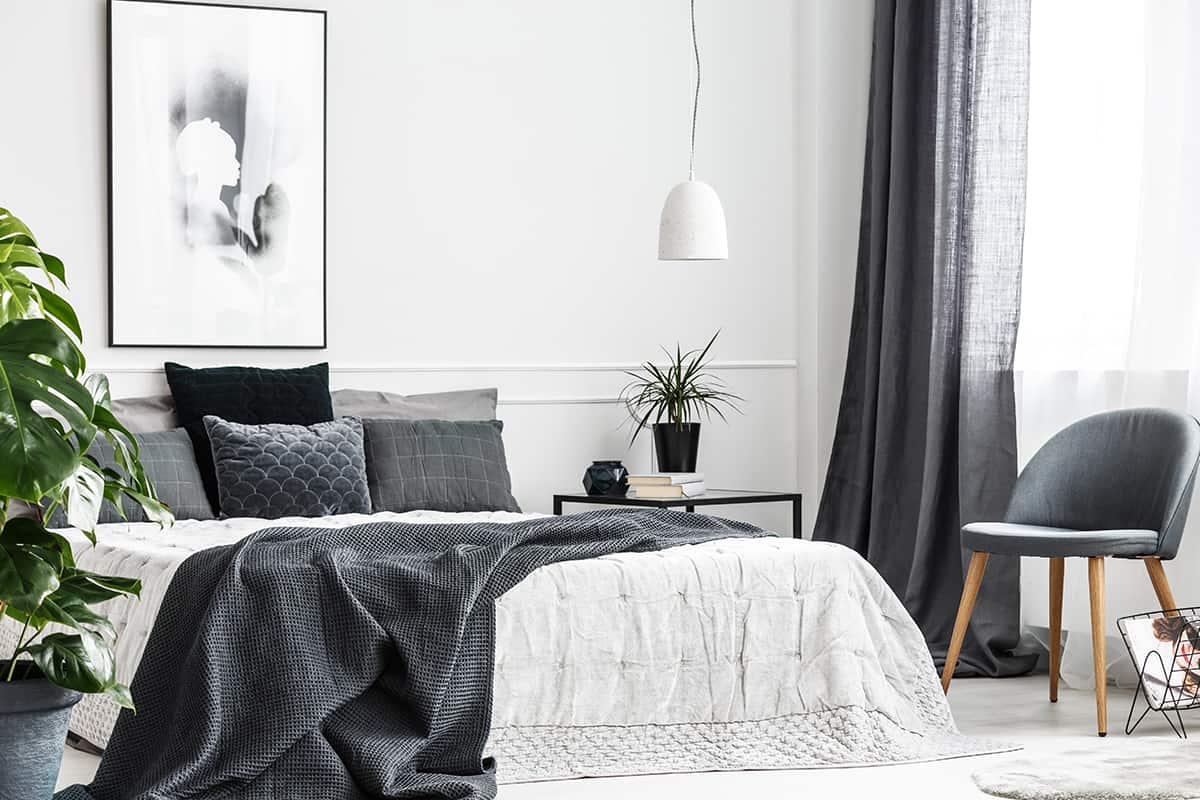The color known as ‘carbon’ is an intense and dark shade of gray that will appear black in most light. Although the color isn’t strictly black, it is considered a shade of black by most people since it is so dark that it would be hard to distinguish it from true black.
You could also consider carbon to be a shade of off-black. Here, we look closer at the color carbon and explore the best ways to use it around the home.
Is Carbon Gray or Black?
Many people find it a struggle to identify whether the color carbon is black or gray, and this is because the color can be either. Carbon is a natural element, and in its natural form, it can take on shades of both gray and black. However, when we talk about the color carbon, we are referring to a deep and dark shade that hovers right between black and gray.
When using the color carbon in your home, whether or not it appears gray or black is going to depend on your lighting and the other colors used in the space. In a dimly lit room, carbon will almost certainly appear black. For example, carbon paint used on a wooden staircase in a hallway without windows will give the look of a black staircase.
However, carbon-colored kitchen cabinets in a bright and airy kitchen with plenty of natural light may appear to be more of a dark gray color. Often, deep shades of gray appear black until they are viewed side by side with an item that is true black. For example, if you paint a door in carbon and paint the surrounding doorframe in true black, you will likely be able to see the subtle difference between the two.
In this case, the carbon-painted door will then appear to be more gray than black. Equally, if carbon is the darkest color you have used in a room, then it will appear black compared with the other lighter colors in the space. Rather than distinguishing carbon as a shade of black or gray, it is useful to put it in the category of off-black colors. This is because it is so close to the color black without being exactly pure black.
Similar Colors to Carbon
Carbon has similarities to many other shades of dark gray and off-black, which could be useful alternatives to carbon or used in the same ways.
Graphite
Graphite gray is a deep, dark gray color that often has a slightly cool or neutral undertone. Like carbon, graphite is a dark neutral that can look black in some lighting, but it is not as close to black as carbon.
These two colors can be used in many of the same ways since they are both considered to be modern shades that work well with minimalist or industrial design schemes.
Charcoal
The color charcoal in home decor typically refers to a dark grayish-black color. Like carbon, charcoal is a deep and dark color, though it is not quite as close to black as carbon. It can also sometimes have a slightly blue undertone.
Charcoal is a versatile and sophisticated color that can be used in numerous ways in interior design, much like carbon. Though its color can vary slightly depending on the specific shade and undertones, it typically falls within the dark gray to black spectrum.
Ink Black
Ink black is a very dark, deep black color, similar to the color of black ink commonly used for writing and printing. It is often described as a pure and intense black, with little to no undertones of other colors.
It’s a color often used for dramatic and elegant purposes in various applications, including graphic design, fashion, and interior design. When compared to carbon, ink black is stronger and more intense. If you find that carbon appears too gray in your lighting, then ink black could be a good alternative.
Slate
In home decor, ‘slate’ is a color that resembles the natural grayish tones of slate rock. It’s a versatile and neutral color that can be used for various elements such as flooring, countertops, furniture, and wall paint.
Slate is appreciated for its ability to create a sophisticated and modern aesthetic while also providing a neutral backdrop that can complement a wide range of other colors and design styles. Slate is a definitively gray color, sometimes with blue undertones. It is a similar hue to carbon, but is less intense and significantly lighter.
What is Carbon Named After?
Carbon is a naturally occurring element, and in its most common forms, such as graphite, it appears black or very dark gray. However, since carbon is a natural element, there can be some discrepancy in color depending on a range of factors.
Sometimes carbon can take on a slightly brown-black hue, while other times it may appear more blue-gray. In home decor and interior design, the color ‘carbon’ refers to an extremely dark shade of gray or black.
How to Use Carbon Color in Home Decor
Carbon can be used effectively in interior design to create various looks and atmospheres, depending on how it is applied to the space. When used heavily, carbon can create a deep or intimate atmosphere, or when used more sparingly in a light-colored room it can add definition and sharp contrast.
Accent Wall
If you want to make a statement in a room, consider painting one wall in a carbon color to create a dramatic focal point. This works well in living rooms, bedrooms, or dining areas.
Pair it with lighter-colored walls to create contrast, such as off-white, pale olive green, or dusky pink. You could alternatively opt for a carbon-colored wallpaper to use on an accent wall instead of paint, adding different textures and patterns to the space.
Furniture
Incorporate carbon furniture pieces, such as sofas, chairs, or coffee tables, to add sophistication and a touch of luxury to your space. Dark gray or black furniture can create a strong visual impact, especially when surrounded by lighter hues.
This also represents a good practical option because darker-colored furniture can hide stains better than pale furniture. As a neutral color, carbon furniture will also be easy to coordinate with a variety of color palettes, making it a sensible choice for the future.
Cabinetry
Use carbon black cabinetry in the kitchen or bathroom for a modern and sleek look, pairing this with high-shine metallic fixtures and fittings to enhance elegance. To avoid a heavy look, opt for light countertops and splashbacks, such as white quartz.
Textiles
Textiles in dark carbon colors, such as curtains, rugs, and throw pillows, can help to add depth and coziness to a room. This is a good way to add darker hits of color to a space if you don’t want to fully commit to a dark color scheme since cushions and throws can be easily swapped out relatively inexpensively.
Art and Decor
Carbon black frames can make art pieces stand out against pale walls, effectively creating making them more of a focal point. This can also look sleek and modern, creating an art gallery vibe in your home.
Carbon shelving can also be considered to display decorative items, helping them to become a more prominent feature compared with pale shelving.
Flooring
Consider black or dark gray flooring materials like hardwood or tile to help ground a room. Carbon colors for flooring can create a bold and sophisticated foundation for your design. This will work well in a range of interior decor themes, from rustic through to minimalist.
Contrast
Use carbon shades to create high contrast with lighter colors; for example, white walls with carbon furniture or accents can make the design elements pop. You can also introduce touches of carbon to a room painted in muted tones or pastel colors for added definition and drama.
Accent Pieces
Use carbon as an accent color sparingly in rooms with a different dominant color scheme. For example add decorative items such as vases, lamps, or picture frames in carbon. This can help to punctuate a space, especially if the existing colors feel quite flat.
Ceilings and Trim
Painting ceilings or trim in dark shades like carbon can create a bold and unique look, especially in spaces with high ceilings or interesting architectural details.
Interior doors can be painted in carbon to make a feature of them, or alternatively paint door frames in carbon and paint the doors themselves in white to create a striking frame around the door. Carbon is an interesting alternative to the more typical trim colors used in homes, having a similar effect to black but with a less harsh impact.
Fixtures and Fittings
To add subtle hints of carbon into a color scheme, opt for carbon fixtures and fittings such as door handles and light pulls. Faucets and other bathroom hardware can also be found in carbon, which adds a striking and unusual look to a room while maintaining a neutral color palette.
